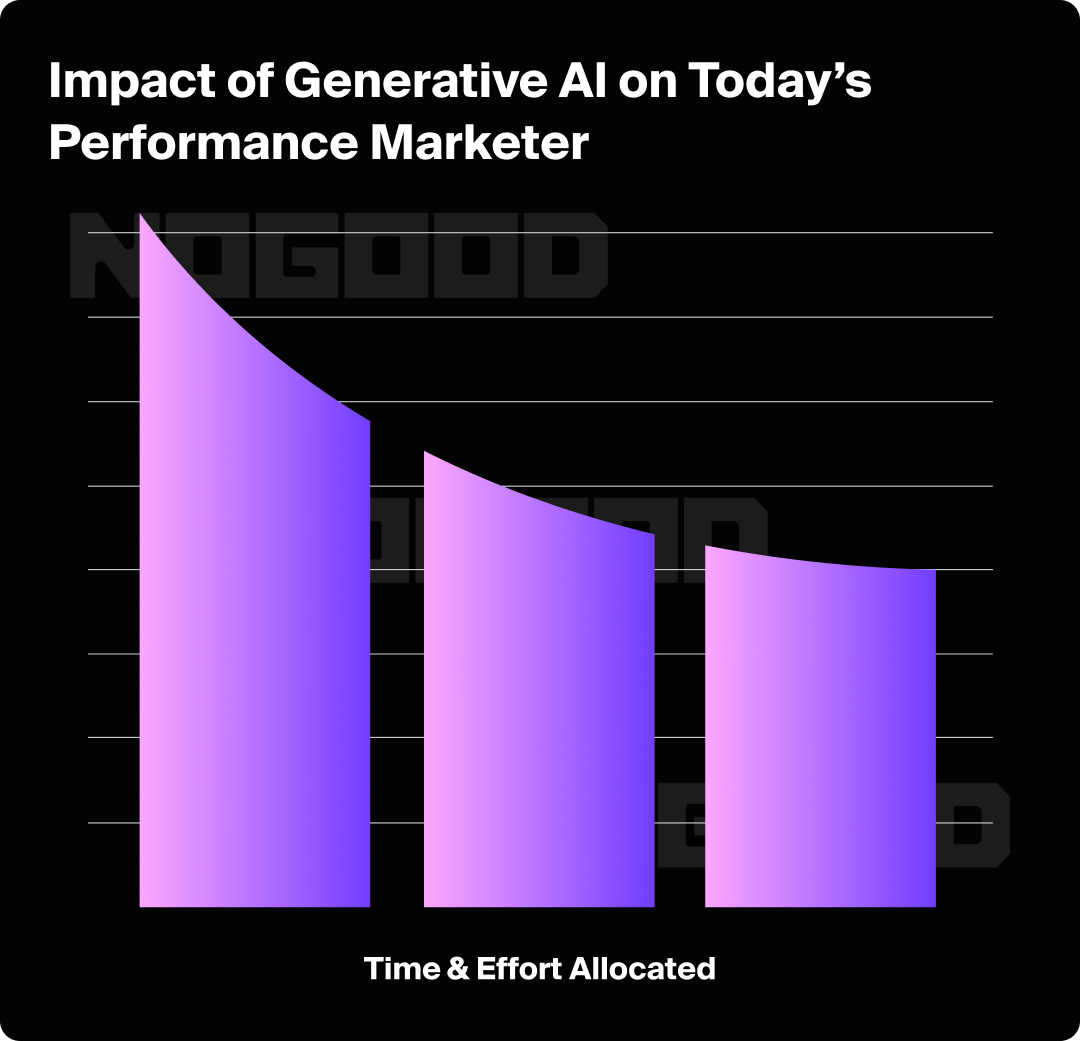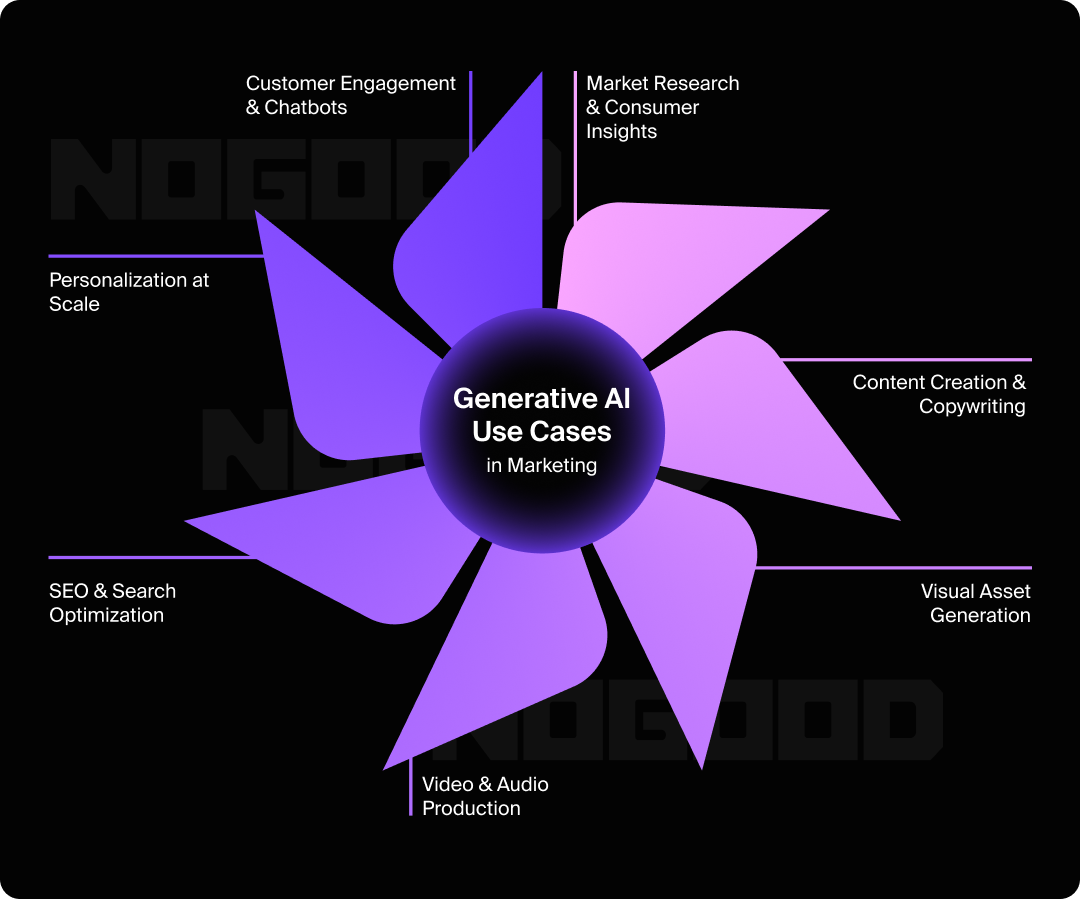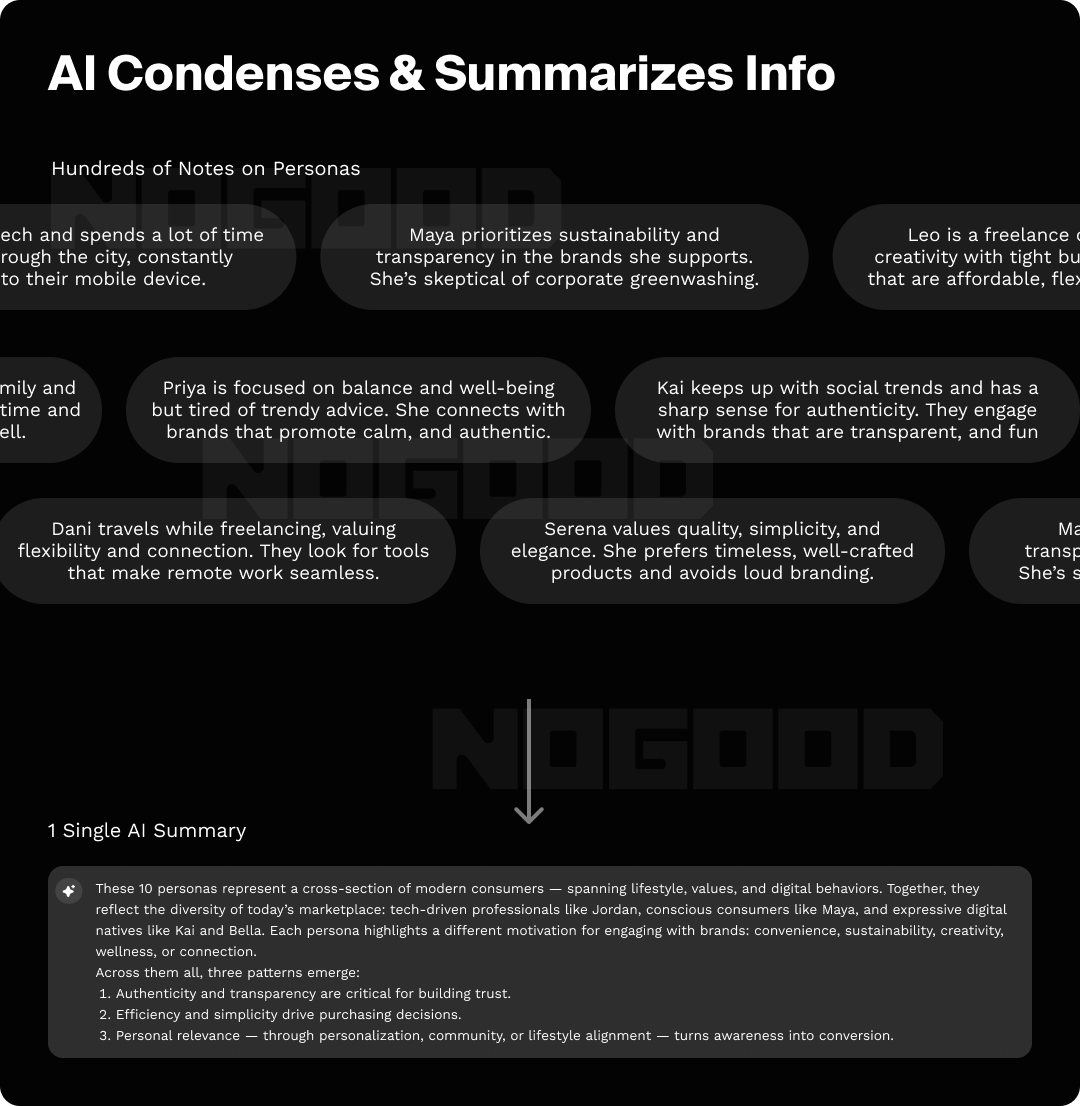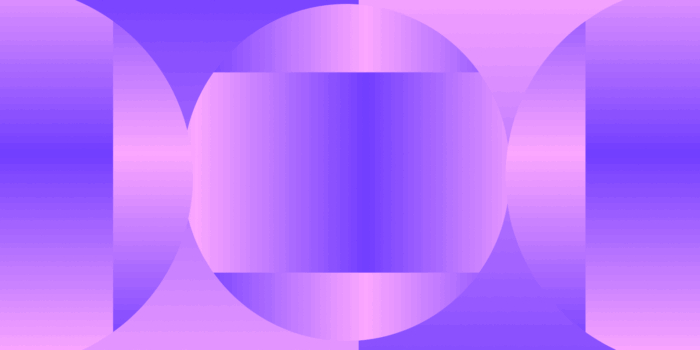Marketing is all about “rights”: reaching the right audience, at the right time, on the right channel, and with the right messaging and creative. If your eyes just widened or you sat back and took a pause, I’m right there with you; that’s a lot of variables at play.
For years, marketers have been alternating between celebrating the success of a campaign and drowning in the sheer amount of things that need to be done to keep up with tactical execution.
Then, a few years ago, a new player entered the game: generative AI. Though it’s leveraged by countless organizations for countless functions now, marketers collectively breathed a deep sigh of relief when we realized, “hey, this thing could be a game-changer for us, too”.
What Is Generative AI in Marketing?
Generative AI is a branch of artificial intelligence that creates new content (whether that’s text, images, videos, audio, or even code) based on patterns it has learned from massive training datasets. Unlike traditional AI, generative AI produces something original in response to your input or inputs (we call these prompts).
For marketers, this means leveraging tools like ChatGPT, Jasper, MidJourney, and Stable Diffusion to generate a world of marketing materials: ad copy, blog posts, graphics, social media captions, or even product descriptions. And the kicker? Where you previously needed a team grinding out dozens of headline variations, ChatGPT can do it in seconds.
Don’t freak out (I beg). For us, it’s not about automating the things we do on a daily basis and making us obsolete; it’s about having the newfound ability to scale creativity and experimentation without requiring a full creative team for every asset (give your designers a break; they need it).
Note: I’ve yelled about this before, and I’ll yell about it again. AI doesn’t replace marketers. As long as we’re marketing to real people (which we will be until the robots completely take over), the human touch will remain a necessary part of the job; that’s why we’re still here.

At its core, generative AI in a marketing context hinges on amplifying the impact of marketing campaigns with automated speed, personalization, and creative expansion. It’s efficiency at scale.
What Are the Use Cases of AI in Marketing?
If you’re a “I’ll believe it when I see it” kind of person, let me give you some more specifics. Marketing is a broad space with many disciplines within it; surely generative AI can’t apply to all of them. Well, I hate to burst your bubble, because it probably does.
And if you don’t see your field of marketing in this article, leave a comment; I’ll add it to the article 😉

1. Content Creation & Copywriting
Probably the most clear-cut use case for generative AI in marketing is for copy generation. Take it from me (I’m a copywriter by trade); ChatGPT has changed my life for the better. And that’s coming from someone who had a full-on panic attack when ChatGPT dropped because I thought I’d have to do a hard career pivot.
- Blog posts, email copy, ad headlines, and landing pages. With the proper AI prompt engineering, generative AI can take content briefs and turn them into detailed outlines. I’ll put it in all caps here because I don’t want to say it again: DON’T USE GENERATIVE AI TO WRITE YOUR CONTENT IN ITS ENTIRETY. It’s lazy, and I’ll judge you.
- Copy variations for A/B testing. If you have the first draft of a landing page, but need to make specific adjustments for an A/B test or experiment, ask generative AI. It can generate not just one alternative option, but 20 or even 200.
- Reduction of creative bottlenecks and writer’s block. Since I implemented generative AI into my writing process, writer’s block is a thing of the past. If I’m looking for a specific word and can’t figure out what it is, I simply ask. If I need inspiration for a clever metaphor, say it with me: I simply ask.

2. Visual Asset Generation
Apart from creating text and code from your inputs, generative AI can make visual assets, too. Tools like MidJourney, DALL-E, and Stable Diffusion started the revolution; now, generative AI is being integrated into the design platforms that you already know and love, too:
- During Config in May of 2025, Figma introduced AI-assisted design features like auto-generating mockups, refining layouts, and suggesting UI copy. The stated goal of this change is to reduce the time spent on repetitive design tweaks.
- Canva first introduced its AI suite in 2023, but has continued to iterate since then. During Canva Create 2025, they rolled out Canva AI, a dedicated design partner that’s integrated into pretty much every button on the platform.
- Adobe’s Firefly was first launched in 2023, too. It’s a generative AI suite embedded across Photoshop, Illustrator, and Premiere Pro. They’ve since continued to innovate on the initial product (in classic Adobe fashion).

3. Video & Audio Production
Rounding out the content and visual use cases for generative AI is video and audio production. Between specialized AI video generation tools like Kling AI, Runway, and Google Veo 2, there are also use cases for your standard AI chatbots:
- Scriptwriting for social posts or video ads. Most generative AI models can process multimodal content. Give the generative AI your video (or a blog post that you’re planning on making a video about) and ask it for a 30-second or minute-long video script. Voila!
- AI voiceovers and synthetic video avatars. If you’re chronically online like me, you’ve probably seen videos with AI-generated voiceovers. Most of the time they’re not the greatest quality for random posts on TikTok, but there are plenty of tools out there that can generate real-sounding voice-overs for your videos.
- Repurposing long-form webinars into shorts for TikTok or Instagram. You no longer have to sit through an entire webinar recording and pick out the “nuggets” of information that will make a good social post. Just feed it to the AI!
4. SEO & Search Optimization
As an SEO and copywriter, this is where I want to give an ✨extra word of caution✨
I’ve found that generative AI tends to lie or hallucinate about statistics or metrics (i.e., it won’t give you an accurate read of what the monthly search volume for a keyword is). So when it comes to many SEO tasks, I would either recommend not using AI at all, or just fact-checking with a platform like Ahrefs, Search Console, or Keywords Everywhere.
- Generating metadata (title tags, meta descriptions). If you have a simple but manual task (like a list of page titles and just need to tack on “| Company Name” at the end), AI can help. There’s also the concatenate function in Google Sheets, but I won’t yuck your yum.
- Optimizing content for AEO (Answer Engine Optimization). It’s possible to use generative AI for this, but for a certain subset of the work. You can ask ChatGPT what recommendations it has, but don’t take them as gospel. I tend to use generative AI here to do research for what brands show up in AI search results, so I can adjust my AEO strategies accordingly (for monitoring, I’ve got Goodie).
All of this is to say: though this is a legitimate use case for generative AI in marketing, I only recommend using it for the generation of ideas or recommendations upon feeding the AI the data that you have already collected. Don’t ask ChatGPT to recommend keywords; ask it to create your blog topics based on the target keywords you’ve already identified.
5. Personalization at Scale
This is where generative AI’s power starts to get a little wild and cross-functional. We’ve talked about it before, but here are some examples of personalization at scale using generative AI:
- AI-powered customer journeys. Instead of static drip campaigns, generative AI can dynamically generate emails, ads, or landing pages tailored to groups of customers’ behavior and preferences.
- Tailored product recommendations and messaging. Generative AI goes beyond “people who bought X also bought Y”; it can pick up on data trends that are invisible to the human eye, resulting in ultra-custom marketing.
- Example: An eCommerce brand can send personalized product emails where each content block (product descriptions, images, and CTAs) is AI-generated to match an individual shopper’s interests.

6. Customer Engagement & Chatbots
I hate to say it, but the speed of AI has also made us more impatient. Goodbye to both your attention span and your capacity to “give me one second”. The good news? Generative AI chatbots are meeting that demand head-on. No more scripted bots; these babies can handle open-ended questions, learn context, and respond in human-like ways (which creeps me out sometimes, not gonna lie).
- Chatbots for natural conversation. You can build a chatbot that adapts tone, references past interactions, and keeps conversations flowing, decreasing the amount of customer service reps required and improving customer satisfaction.
- The rise of virtual brand ambassadors. AI avatars and assistants are helping brands engage customers across websites, apps, and even the metaverse. It’s like Build-A-Bear became Build-An-Influencer.
- Example: Retail brands are deploying AI assistants that answer questions, suggest items, check availability, and drive conversions with tailored upsells.
7. Market Research & Consumer Insights
Marketing analysts, listen up and hold your applause; you no longer have to spend endless hours combing through data to understand your audience. Instead, use generative AI to speed up this process by making it do the heavy lifting of making sense of all of that unstructured information.
- Summarizing surveys and reviews. Gone are the days of manually coding responses; AI can quickly highlight common themes, complaints, and opportunities.
- Generating customer personas. Clustering behaviors or preferences into distinct personas helps you tailor campaigns more effectively.
- Faster campaign iteration. No need to sound the panic alarm; with generative AI, you can pivot strategies in real time, reducing the lag between consumer feedback and campaign adjustments.

8. Workflow Automation & Productivity
The most general, but arguably the most important part of why generative AI is so incredibly important to us marketers. Repetitive, monotonous tasks are no more; now, you can spend less time on admin and more time on strategy and innovation (yay!).
- Auto-generating briefs and reports. Pulling thousands of data points per campaign to create branded reports and outlines for creative projects.
- Drafting internal comms and meeting recaps. Stay aligned and informed (without having to manually write every Slack update).
- Integrating into the tools you already use. HubSpot, Salesforce, Notion, and many more integrate with generative AI; now all of that is a seamless part of the marketing workflow, reducing friction and saving dozens of hours each week.
The Way Forward: Adopting Generative AI in Marketing Processes
The role of marketers is evolving with generative AI, offering an innovative path for us to engage with consumers like we never have before. As we continue to explore and implement AI into our day-to-day lives, the future of marketing looks more efficient, more creative, and more personalized, ensuring that the relationship between brands and their audiences grows stronger and more meaningful.
If you’re a marketer or part of a company that is just getting started with generative AI, welcome to the club. Here’s a look at how to harness AI as a superpower through a three-step approach.

Level 1: Getting Started With Generative AI
Implement an entry-level adoption approach, leveraging existing AI tools for quick wins through opportunity identification and idea generation.
- The Tools You Need: Off-the-shelf AI tools like automated writing tools for ad copywriting, messaging, and creative ideation provide an easy starting point for brands to test process optimization.
Level 2: Developing Customized Approaches
Once familiar, you and your team of AI-backed marketers can identify a few low-risk, high-impact, and low-cost use cases to experiment with GenAI.
- What You’ll Tackle: Setting up processes, implementing guardrails for use, and, most importantly, conducting in-depth analysis by setting up data frameworks, tracking results, and refining with the aim of broader implementation.
Level 3: Full Adoption & Digital Transformation
Brands that have seen success in implementing the foundations of generative AI across processes should start exploring the transformative potential of full-suite AI capabilities for marketing.
- What This Entails: Providing guidelines for adoption and conducting a full audit of marketing processes and structures to identify use cases for process automation, personalization, and analysis.
Generative AI in Marketing: Conclusion
The future of generative AI in performance marketing gets brighter by the day. It highlights a future where marketers are given not only better capabilities, but more time to obsess over their customers again (we love you guys 💖).
Generative AI allows brands and marketing teams to genuinely connect with their customers to identify how offerings can align with their unique (yet ever-changing) needs. While this technology promises to unlock new opportunities for brands to connect with their audiences in meaningful and impactful ways, it also shows that creativity, personalization, and efficiency are paramount in the near future.
As brands begin dipping their toes into the waters of generative AI, it is key for marketers to start better understanding and adopting AI technologies to stay competitive.





